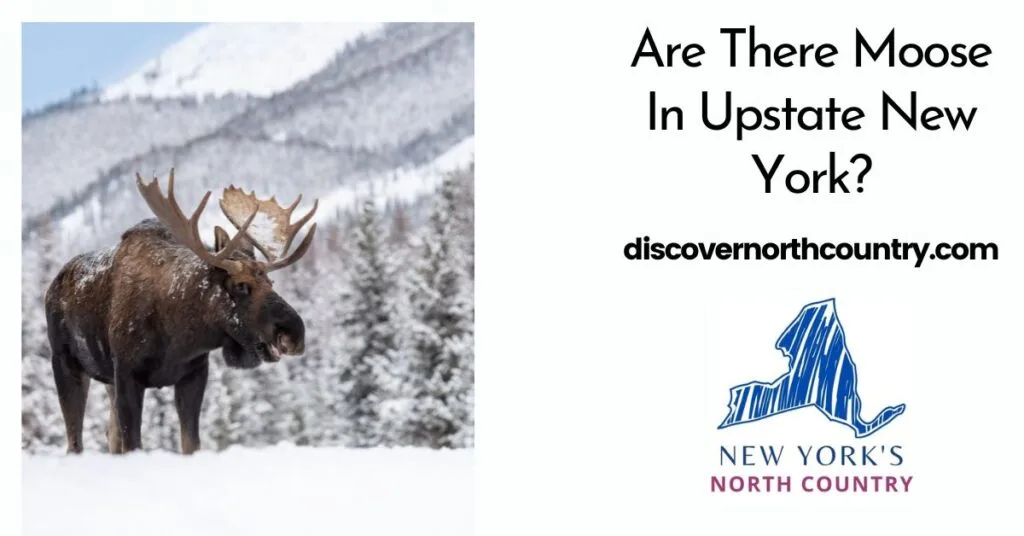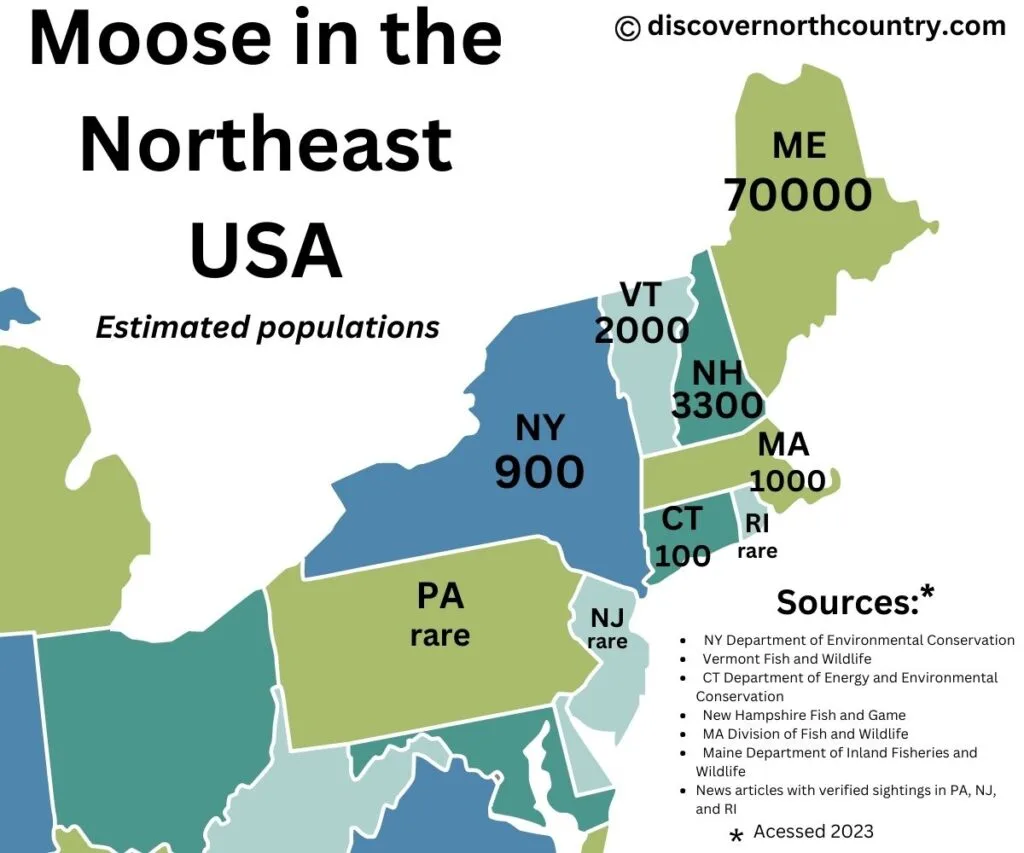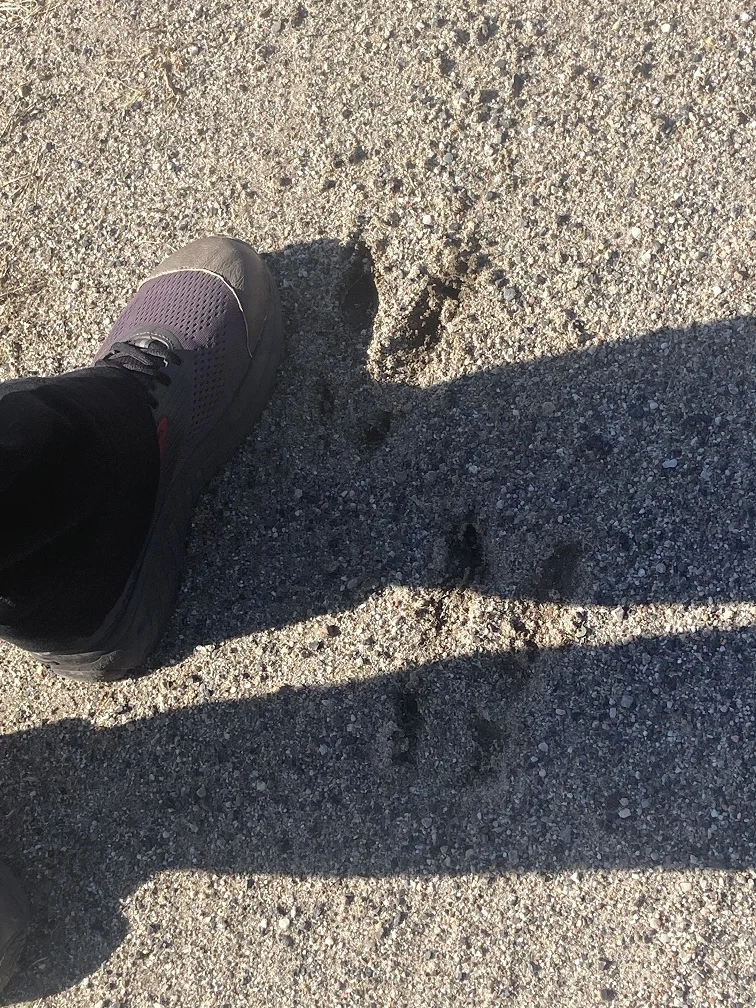Do you want to know if there are moose in upstate New York? In this post, learn the answer and where you would need to go to have the best chance of spotting one.

New York is a beautiful state that takes conservation seriously, which means that there is a lot of wilderness. You can find all sorts of wild animals, such as black bear, raccoons, bald eagles, white-tailed deer, and coyotes.
But, what about those more elusive animals that we rarely get to see, such as wolves and moose?
If you spend any time outdoors, or a lot of time in the woods like me, you are definitely wondering about the odds of spotting a moose. Turns out, it’s definitely not impossible to see a moose in New York.
Do moose live in New York?
Yes, there is a healthy, established population of moose in New York. Moose are a protected species in New York, and most people agree that the reestablishment of a thriving moose population in the state is a positive sign of a healthier natural environment.
This protected status, along with greater protection of its habitat, have been major factors that have contributed to the increase in moose population in the state of New York.
How many moose are in New York?
According to the New York Department of Environmental Conservation (NY DEC), there are as many as 900 moose in the state. However, since can moose travel up to 100 miles over the course of several weeks, this number could fluctuate as moose enter and leave the region.
There are tens of thousands of moose in the northeast region of the United States, the highest concentration of moose in US states outside of Alaska. Moose frequently wander between the borders of adjacent states, since the political boundary is not quite as important to them as it is to the humans who live there.
This is one reason why it is possible, though very uncommon, to see a moose in Pennsylvania or New Jersey, even though most experts agree that there are no moose living full-time in those states. Since moose thrive in colder habitats, the natural historic range of the moose did not extend much further south than the portion of the United States covered in the map below.

Do moose live in the Catskills?
Yes, it is possible to find moose in the Catskill Mountains. Most New York Department of Conservation experts believe that the moose spotted in the Catskills are isolated individuals that have wandered away from their primary habitat.
However, because the New York moose population has been growing over the past few decades due to their protected status, it is conceivable that more moose will be spotted outside of the Adirondacks over time.
Moose sightings in the Catskills
- While not technically in the Catskills, the 2022 sighting in Niskayuna, NY isn’t far away
- Possible moose sighting in Columbia County in 2020
- Photograph of a moose spotted in Pawling, NY in 2022
- In 2018, there were at least eight moose sightings reported to the NY DEC in Region 4 (Northern Catskill region) and at least one in Region 3 (Lower Hudson Valley)
Even though it is amazing to know that the moose population is increasing, making it more likely for any of us residents of New York to actually see one for ourselves, it does make it more dangerous to drive – especially at night. Everyone should be on the lookout for both deer and moose while driving at dusk and dark.
Were moose even completely absent from New York state?
According to state officials, moose were completely eliminate, or extirpated, from New York in 1860. It wasn’t until the 1980s that the state acknowledged that there was a moose population again.
In theory, it is possible that there have always been at least some moose living in the more isolated regions of the state and that they went undetected by most people. For example, the Adirondack Park, which consists of about 6 million acres, has a human population density of only about 15 people per square mile vs. more than 29,000 in New York City.
The Adirondack Park consists of primarily undeveloped wilderness with relatively few roads crossing the midsection of the region. This area consists of ideal moose habitat, and it is conceivable that some moose could have survived unnoticed.
Regardless of whether moose were ever truly completely gone, state biologists agree that the population of moose in the state has grown to at least 600-700 individuals, and could include as many as 900.
Where to spot moose in upstate New York?
While it is possible to see a moose anywhere in New York, you will have the best luck in the northeastern corner of the state. The majority of moose sightings are from Warren County north to the Canadian border and as far west as Lewis County.
You might also see a moose anywhere in the North Country, including St. Lawrence County, Clinton County, or Franklin County. There have even been a few sightings in the Watertown area of Jefferson County.
The photograph below is what I believe to be a moose print, which can be distinguished from a deer print based on the size and the presence of a print from their “dew claws” towards the back of the print. A few evenings prior to the spotting of this moose print in sand, which happened to be located in good moose habitat, loud moose calls were heard.

Of course, I’m not an expert on moose. But, I know that the moose are out and about doing their daily business around us, even if they try not to be seen.
Conclusion
I hope that you found this article about moose in upstate New York interesting. It’s certainly possible, yet difficult, to be in the right place at the right time to spot a moose in the wild in New York.
It’s still my goal to see one (and not just hear one calling), but I also don’t want to encounter one while out hiking in the woods.
If you have any questions about something that you read in this post, or if you think you saw a moose (or if you know you did), please join in the discussion below.
Thanks for stopping by today!
